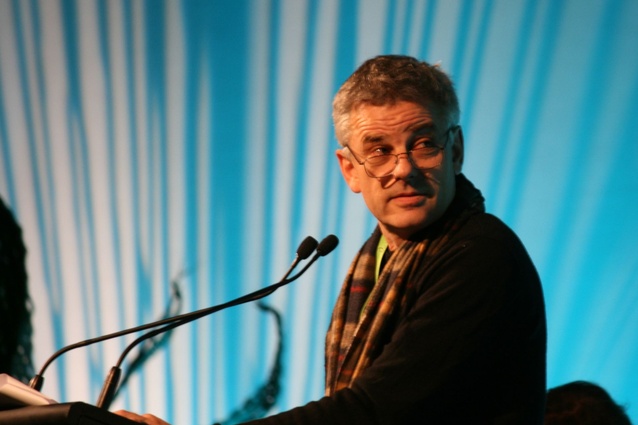Vincent paints a canvas for landscape architects
Vincent Ward – artist and storyteller – painted a canvas of many hues for the international audience at the IFLA 50 conference of landscape architects in Auckland this month.
In an inimitably eclectic and personable manner, Ward spliced his inspirational insights on the practice of landscape architecture with throws to clips from his verdant portfolio of movie making. With the strand of “cultural landscape” becoming more and more prominent in the profession, Ward’s words were well grounded – from reviving elements of stories from his boyhood around Greytown in the Wairarapa through to vignettes of his recent ventures in Abu Dhabi and Shanghai.
Speaking three years ago at the New Zealand Institute of Landscape Architects conference Ward spoke movingly of his father’s story in relation to the rural landscape of the Wairarapa. On this special occasion he talked about his mother’s story in relation to the many different cultural landscapes of her life, which sadly ended last year, and by way of talking about the role played by the past in our lives amidst the melting pot of cultural traditions so common to all of us.
“People weave a track through countries, cities, towns, terrains. How do we show that? In a country of displaced people how do we capture the ineffable? How do we discover elements of (history and place) and engage with them in an everyday way?”
This served as an instant provocation to Ward’s audience who then began to question the struggle they have to produce work that can transcend and combat spaces that are otherwise cold, alienating or disconnected. As one questioner put it: “I wish I had the toolkit of a film maker to transpose moments (on a landscape) that are more in contact with our humanity, as acts of humility rather than being the work of an expert who is expected to have all the answers.”
Having stated he was not oblivious to the practical needs of a landscape architect, Ward talked in terms of creating striking but discrete types of cultural frisson.
“To be more stimulating, (our design) has to prompt a response – however we do that. It can be through resonance and subtlety although personally I tend to be struck by more dramatic things such as the activation of music and sounds.”
Ward then shared some memorable oral tales of the rural character, folk and locales encountered in the Wairarapa – the victim of a rail accident, a locally renowned woodturner, a house occupied in part by sheep. Vestiges of which are known to fewer and fewer people, therefore remaining unsurfaced, untold. He also recounted tales of victors and vanquished from te ao Māori that are hidden underneath non-descript hills: the use of a raupo kite in recapturing a pa on one site (Wairarapa), and the infiltration of a pa by deceptive use of a tattooist at another (Taranaki). These weren’t landmarks, and yet they could or should be, if only we had maps for them (akin to those in Ward’s movie, Map of the Human Heart).
“Retaining that character, that sense of social fabric – with all its contrasts – is more interesting to me than a bland memorial to an individual founding father,” said Ward.
Ward suggested one approach for landscape architects is to delineate “pockets” for their work, as counterpoints within the surrounding environment.
“These don’t have to be big, or expensive, or overtly commercial. A metaphor, an object or sounds can all evoke something particular about a place. (Your job is to) find specific and genuine elements that will resonate, so that from the one grain of sand you (and we) get the whole beach. (Great landscape architecture is) achievable, it’s just about having the intent”.










